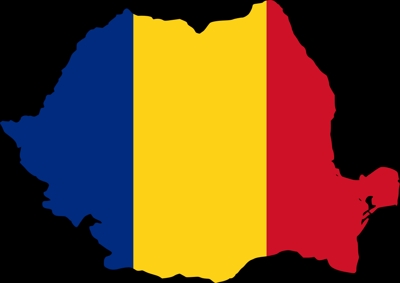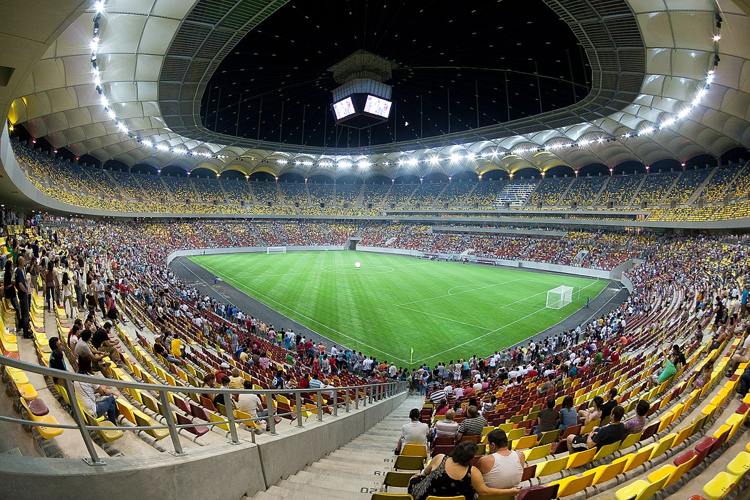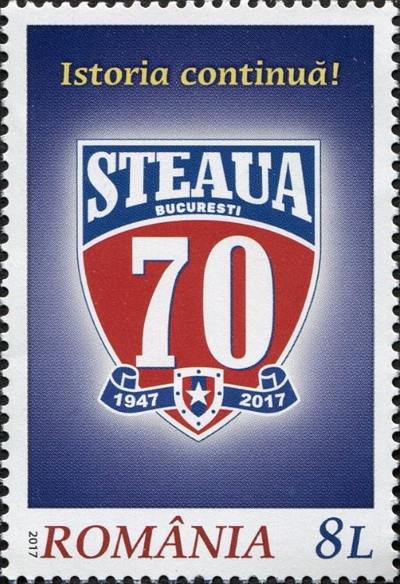Romanian Liga I Stadiums & Stats

The Liga I Orange, as it’s currently known for sponsorship reasons, sits at the top of the Romanian football league pyramid.
It was established in 1909 under the name of Divizia A and the all-time champions are Steaua București.
Here we’ll give you a little bit more information about how the league operates as well as some history about it.
Be warned, it requires a bit of brain power to get your head around.
Firstly, though, we’re going to give you some info about the sorts of stadiums you’ll come across in Romania.
Stadium Stats
| Stadium | Year Opened | Capacity | Ave Attendance | Record Attendance | Record Attendance Match |
|---|---|---|---|---|---|
|
Arena Națională
Steaua București / Romania |
2011 | 55634 | 21099 | 53329 | Romania v Netherlands (2012) |
Team Stats
| Team | Year Founded | Nickname | Team Owner |
|---|---|---|---|
| FC Steaua București | 1947 | Roș-Albaștrii (The Red and Blues), Militarii (The Army Men), Viteziștii (The Speedsters) | George Becali |
Romanian Liga I Stadiums

Romanian football stadiums tend to have a capacity of between 10,000 and 20,000, though there are a few bigger grounds in the country. The most popular and successful team in the country, Steaua București, play their games at the 55,600 seat Arena Națională; the same location used for Romania’s national team matches.
The next largest ground is the Stadionul Dan Păltinișanu, which can fit 20,000 fewer than the national stadium as it has a capacity of only 32,972.
At the other end of the spectrum, the stadium with the smallest capacity is Stadionul Viitorul holding just 4,554 people. This is the home of Viitorul Constanța and was only opened in 2015. Viitorul Constanța also play in Liga I which gives you some idea of the disparity.
About The League

The league system in Romania is wonderfully and needlessly complicated. Gone are the days of all of the teams playing one another and the team with the most points winning. Now, each team plays the others once at home and once away. At the end of that, the top six teams based on the points collated (three for a win, none for a loss, one for a draw) go into a championship round and the bottom eight teams go into a separate round to decide which ones will be relegated.
The top six play each other twice more and at the end of those sixty games the points earned are added to half of the points from the regular season (rounded up) and the top side are the champions and enter the third qualifying round of the Champions League along with the second place team. The third place side enters the Europa League at the third qualifying round stage, whilst the fourth place team goes into the same competition in the second qualifying round.
Meanwhile the relegation round works in a similar way. All points from the regular season are halved and rounded up before the eight teams play each other twice. At the end of that, the mini league table dictates where they finish in the main table overall, with the winners of the relegation round finishing seventh in the actual table and so on. The bottom two sides are automatically relegated and replaced with the winners of the two divisions in the second-tier of football, whilst the team that finished third from bottom enters the relegation play-offs to decide if it is relegated or remains in the top-flight.
They must all be exhausted.
Romanian Liga I History

There is some debate surrounding the origins of football itself in Romania. The sport was first recorded as being played by a newspaper in 1888, with reports of two children kicking a ball about deserving some print time.
The beginnings of the football league system in Romania is equally confusing. There was a league system that began in the 1909-1910 season, though it didn’t really begin to take shape properly until the 1970s.
It was then that Colegiul Divizionar A, or Divisional College A, was formed.
Numerous changes to the system were implemented over the next twenty years or so, with the name of the top-flight changing to reflect that; Divisional Team’s League A, National Football League, and Professional Club’s League were all used at one time or another.
In 1993 the name became ‘Professional Football League of Romania’ and the second-tier was included. That was when promotion and relegation between the two leagues was also implemented.
